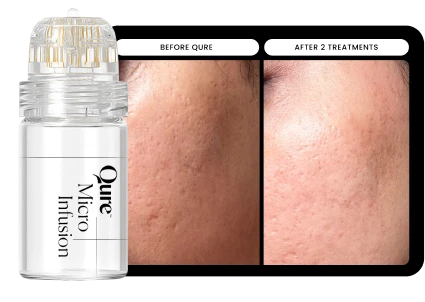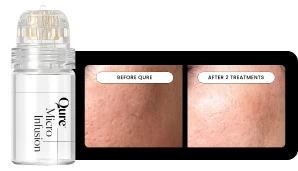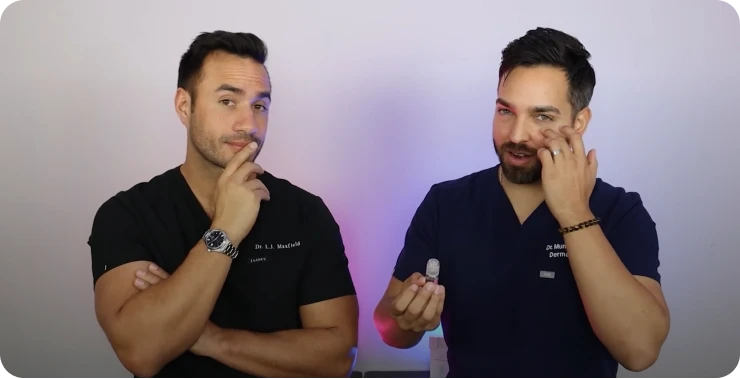How to Get Rid of Acne Scars: A Complete Treatment Guide
Dealing with acne scars and hyperpigmentation can feel like a never-ending battle. Just when you've gotten your breakouts under control, you're left with unwanted reminders that affect your confidence every time you look in the mirror.
We understand this frustration. That's why we've dedicated years to researching and developing effective scar treatments, separating real solutions from marketing hype. Here's what we've learned: you don't need expensive clinic visits or complicated routines to see improvement.
In this guide, you'll discover:
- Why different types of acne scars require different treatment approaches
- The most effective professional and at-home treatment options
- How to prevent new scars while treating existing ones
- Why dermatologists recommend combining treatments for best results
Understanding Acne Scars
Acne scars occur when inflammation damages the skin's support structure. Some scars appear as depressions where tissue was lost, while others become raised as your skin produces excess repair tissue. Your genetics and how quickly you treat active acne play crucial roles in scarring.
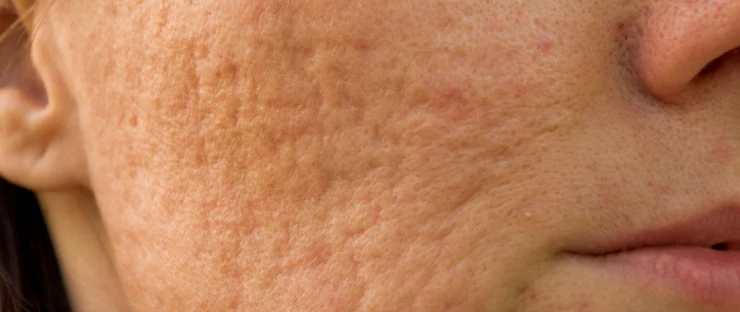
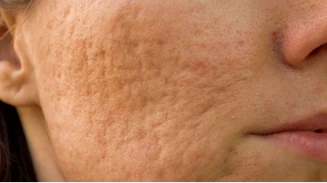
The good news? Once you understand your specific type of scarring, you can choose the most effective treatment approach. Let's look at the different types of scars and their solutions...
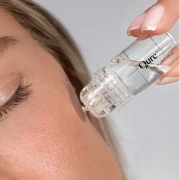
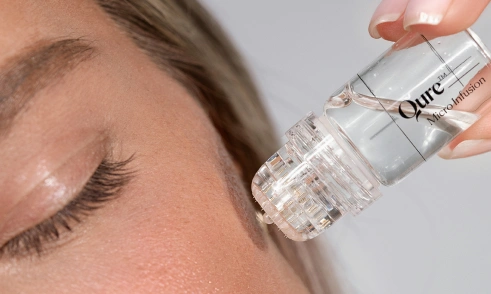
Find out how Micro-Infusion can help you with your acne scars
Types of Acne Scars and Their Treatments
Understanding your specific type of acne scarring is crucial for choosing the right treatment. Here's what you need to know about each type:
Atrophic (Indented) Scars
The most common type of acne scarring, these appear as depressions in the skin and come in three forms:
Icepick Scars
- Deep, narrow indentations that look like tiny holes
- The most challenging to treat due to their depth
- Best treated with a combination of professional treatments and at-home care like Micro-Infusion
Boxcar Scars
- Wider depressions with sharp, defined edges
- More responsive to treatment than icepick scars
- Often show significant improvement with regular Micro-Infusion treatments
Rolling Scars
- Create a wavy, undulating texture across your skin
- Most responsive to treatment among atrophic scars
- Regular collagen stimulation through treatments like Micro-Infusion can significantly improve appearance
Raised Scars
- Hypertrophic: Stay within the original acne site, common on chest and back
- Keloid: Extend beyond the original site, more common in darker skin tones
- Both types result from excess collagen production during healing
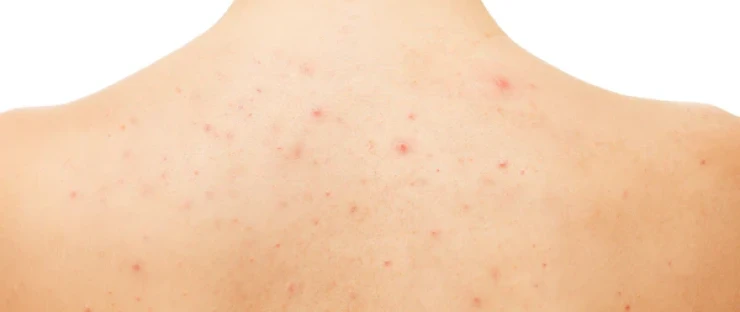
Post-Inflammatory Hyperpigmentation
These dark marks aren't true scars but often cause as much concern. They tend to fade naturally over time, but treatments can speed up this process considerably. Micro-Infusion is particularly effective as it enhances cell turnover while helping brightening ingredients penetrate deeper into the skin.


Find out how Micro-Infusion helps with hyperpigmentation
Top 3 Treatments For Acne Scars
When it comes to treating acne scars, there are three proven approaches that consistently deliver results. Let's explore each one to help you make an informed decision about your treatment path.
Number 1 - Micro-Infusion Technology
The science of scar treatment has changed a lot in recent years. While traditional treatments required frequent clinic visits, Micro-Infusion technology now brings professional-level results home.
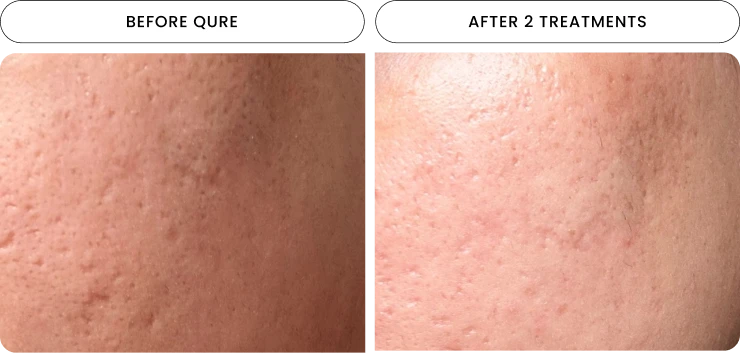
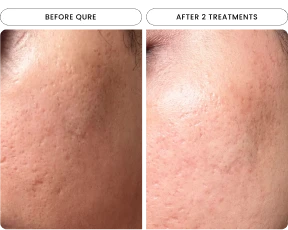
This system combines precision micro-needling using 24K gold clinical-grade needles with advanced serum delivery through hollow needle technology.
What makes Micro-Infusion particularly effective is its dual-action approach.
The system creates controlled micro-channels that trigger your skin's natural healing while simultaneously delivering powerful ingredients exactly where they're needed.
This combination stimulates fresh collagen production and maximizes ingredient absorption, leading to improved texture and tone over time.


Find out how Micro-Infusion helps with hyperpigmentation
Leading dermatologists, including Dr. Shah and Dr. Maxfield, explain why this approach works:
"Micro needling is a great option for a lot of different conditions. By poking holes in the skin, it creates a controlled damage, activating those wound healing factors creating what we call collagen induction. Half the battle of using active ingredients is getting them into and through the skin to be effective."
Click the play button to watch the full review.
Number 2 - Chemical Peels
Chemical Peels Chemical peels work by removing damaged outer skin layers using controlled exfoliation. They're particularly effective for surface-level scarring, post-inflammatory marks, and uneven texture.
While chemical peels can deliver impressive results, they require professional application and multiple sessions. The main drawback is the necessary downtime between treatments and the potential for skin sensitivity.
Number 3 - Laser Resurfacing
Laser treatments use focused light energy to remove damaged skin and stimulate healing. This approach can be highly effective, especially for raised scars and deep texture issues. However, laser treatments come with significant considerations: they require multiple professional sessions, carry a higher cost per treatment, and often need substantial recovery time between sessions.
Ready to Tackle Your Acne Scars?
Now that you understand the different types of acne scarring, choose the serum that targets your main concern:
Dark Spots & Uneven Skin Tone
- Fades post-acne dark marks
- Reduces discoloration from scarring
- Evens out patchy skin tone from past breakouts
Fine Lines & Wrinkles
- Helps smooth indented acne scars
- Improves the appearance of pitted areas
- Supports skin repair and renewal
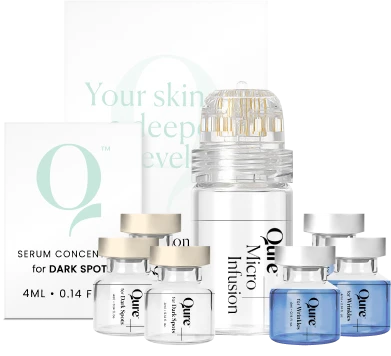

Save Up to 50%
with our Most Popular Bundle.
Get consistent results with our 3-month supply, which includes 6 complete treatments.
Get Up To 50% Off TodayLimited Time Offer
Dermatologist Reviewed
Free World-Wide Shipping over $100
Backed by Science
Have questions?
Our skincare experts are here to help you choose the right treatment plan for your skin.
If you want to learn more, why not check out these articles below:
- Is Microneedling Permanent
- What is True of Microneedling
- Is Microneedling Worth It
- Microneedling Benefits
- Microneedling for Hyperpigmentation
- Microneedling Neck
- Microneedling Pores
- What to Do Before Microneedling
- Microinfusion
- Post Microneedling
- Microneedling Lips
- Types of Microneedling
- Microneedling with Hyaluronic Acid
- Microneedling Cellulite
- What Age to Start Microneedling






